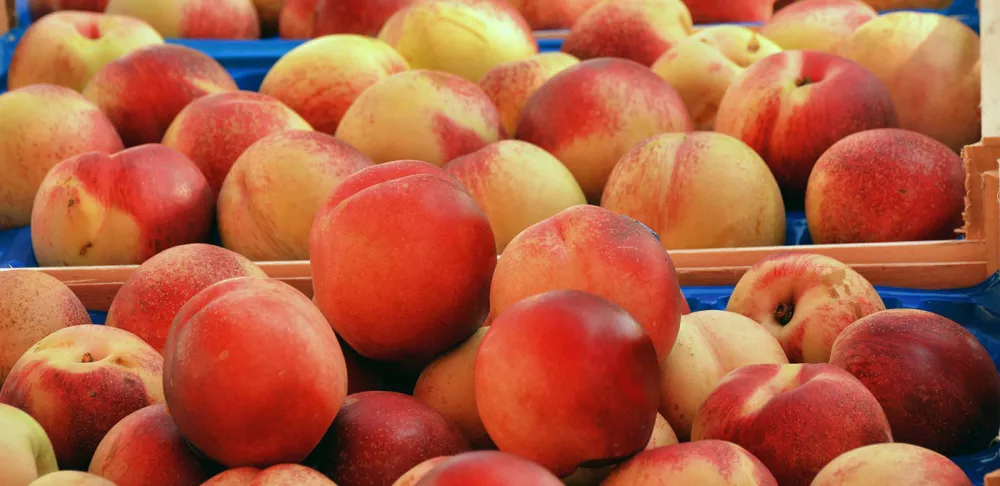For many avid cooks, summertime is synonymous with grilling season. Whether you’re working with a state-of-the-art gas grill, an old-fashioned charcoal grill or even just a simple grate set over a campfire, grilling is much more than just a means of enjoying the outdoors while you prepare a meal.
“While a lot of people think of grilling as a technique that anyone with a beer in their hand can do after sitting in the sun all day, it actually involves a lot of finesse and understanding about how heat transfer works, and how different items react in terms of timing,” says Joshua Resnick, ICE Lead Chef and Operations Manager. “Someone who really knows how to grill is going to be able to control their heat and product so the item has a beautifully charred exterior without being overcooked,” he says. “Meat needs to be moved on and off heat spots while other items, like shrimp, need to be cooked quickly over high heat.”
Given the knowledge and technique required to grill successfully, grilling is an important part of the culinary curriculum at ICE. “Grilling is a fast, dry heat cooking method,” says Director of Culinary Affairs Hervé Malivert, who also explains that it is a relatively healthy method of cooking because it typically doesn’t rely on additional fat and creates intense flavor that precludes the need for additional sauces or condiments. “The maillard reaction helps lock in more moisture and keep meat juicy, tender and flavorful,” explains Chef Hervé. This maillard reaction holds the key to the particular appeal of grilling: a chemical reaction between amino acids and sugars that result in caramelization or browning, and the distinct, desirable flavor that goes with it. The signature grill marks that grilling creates on the surface of whatever you are cooking are evidence of a successful maillard reaction.
While many do tend to associate grilling with items such as burgers, steaks or chops, it is an effective technique that lends flavor to all manner of foods. With help and advice from several ICE Chef-Instructors, here are seven surprising things you can grill.
Learn the ins and outs of grilling at ICE
Chicories
Chicories are certain types of bitter lettuces. While grilling salad greens may not be an intuitive choice, these types of lettuces have a structure and flavor that lend themselves extremely well to the grill. “Grilling allows their sharp bitterness to mellow, giving a more subtle sweetness and nutty flavor,” explains Chef Hervé. “The outside leaves will caramelize and char, while the cores remain crunchy and bitter.” For best results, look for chicories that have a tightly structured head such as radicchio, Belgian endive or tardivo. While not a chicory, romaine hearts can also benefit from grill marks; try it in a Caesar salad for an almost smoky flavor.
Peaches
Many summer fruits work extremely well on the grill. Grilled pineapple is great sprinkled with tajin and honey, and grilled watermelon can be dressed with herbs and lime juice. Chef Joshua explains how his favorite — grilled peaches — can work throughout a meal: “Grilled, in-season peaches can be used in everything, from an appetizer with fresh mozzarella, basil and a bright, herby vinaigrette, to an entrée. Take the peaches off the grill, slice them, toss them with arugula and then rest a steak over the mixture when it comes off the grill so the arugula wilts slightly under the heat and the fats from the steak act as the base of a dressing, then toss it with some lemon juice and serve it alongside the sliced steak. It can even work as a fun dessert topped with a scoop of vanilla ice cream and some torn mint leaves.”

Cheese
There are grilled cheese sandwiches, and then there is literally grilled cheese. To be clear, you can’t put just any cheese on the grill, as most will result in a melty disaster, but certain types of firm cheeses with a high melting point will become beautifully caramelized on the outside, and soft on the inside. Such grillable cheeses include halloumi, jibneh, kasseri and panela, and make flavorful additions for salads or even a great protein option for vegetarian tacos.
Related Read: The Grilling Trick You Have Yet To Try
Broccoli Rabe
ICE Chef-Instructor Michael Garrett recommends broccoli rabe as a candidate for the grill: “I love grilling leafy greens and broccoli rabe because they are fibrous and can hold up against intense heat,” he says. Chef Hervé concurs: “Grilling is great for vegetables. It enhances their natural sweetness and adds a nice smoky and caramelized taste.” Like all grilled applications, proper technique is important, and grilled, fibrous vegetables such as broccoli rabe benefit from being blanched, shocked and dried before grilling.

Dough
Grilled bread makes for an exceptional garlic toast, but you don’t need to limit yourself only to bread that is already baked. A hearty pizza dough that includes a little oil can take on a nice char reminiscent of wood-fired pizzas. Shaped dough can go directly on the hot grill and “bake” on one side for a few minutes, then flip and top with cheese and other toppings to cook the other side while the cheese melts.
Potatoes
“It’s nice to change up the flavor profile (of familiar foods) with the flavor of the grill,” says ICE Lead Chef Barbara Rich, who suggests grilling your spuds this summer. “Par cook the potatoes in salted water,” she recommends. “You basically just finish them on the grill. Fingerlings work great!” Sweet potatoes also benefit from grill marks and char, and are terrific paired with a creamy, yogurt honey dip to offset the grill’s smoky flavor.
Oysters
If anyone has PTSD from an experience shucking oysters, some great news is that not only are grilled oysters delicious, but they will open themselves for you when applied to the grill, another item Chef Joshua recommends. “While most people think of oysters best served raw on the half shell, I love to get some briny, East Coast oysters, grill them and then top them with a compound butter with garlic confit, minced ginger, chives and some fine red pepper flakes,” he says. If your oysters are large enough — and your shucking skills on point — you can shuck the oysters first and place them directly on the grill grates. If they are small and you don’t want to risk spilling their brine, place them in a shallow pan of rice or rock salt, unshucked, inside the grill to steady them.






